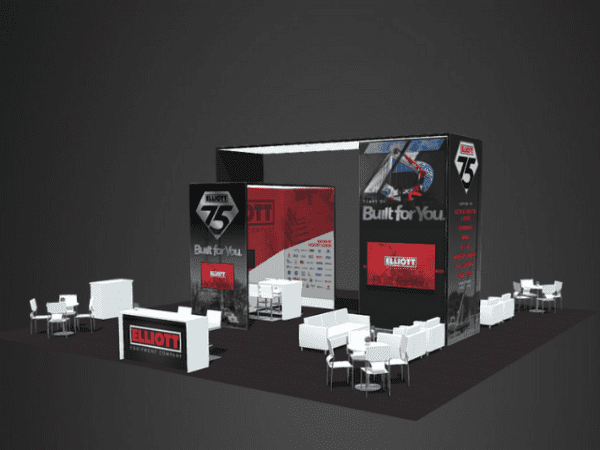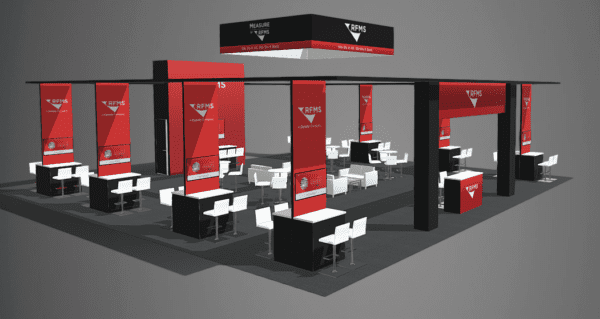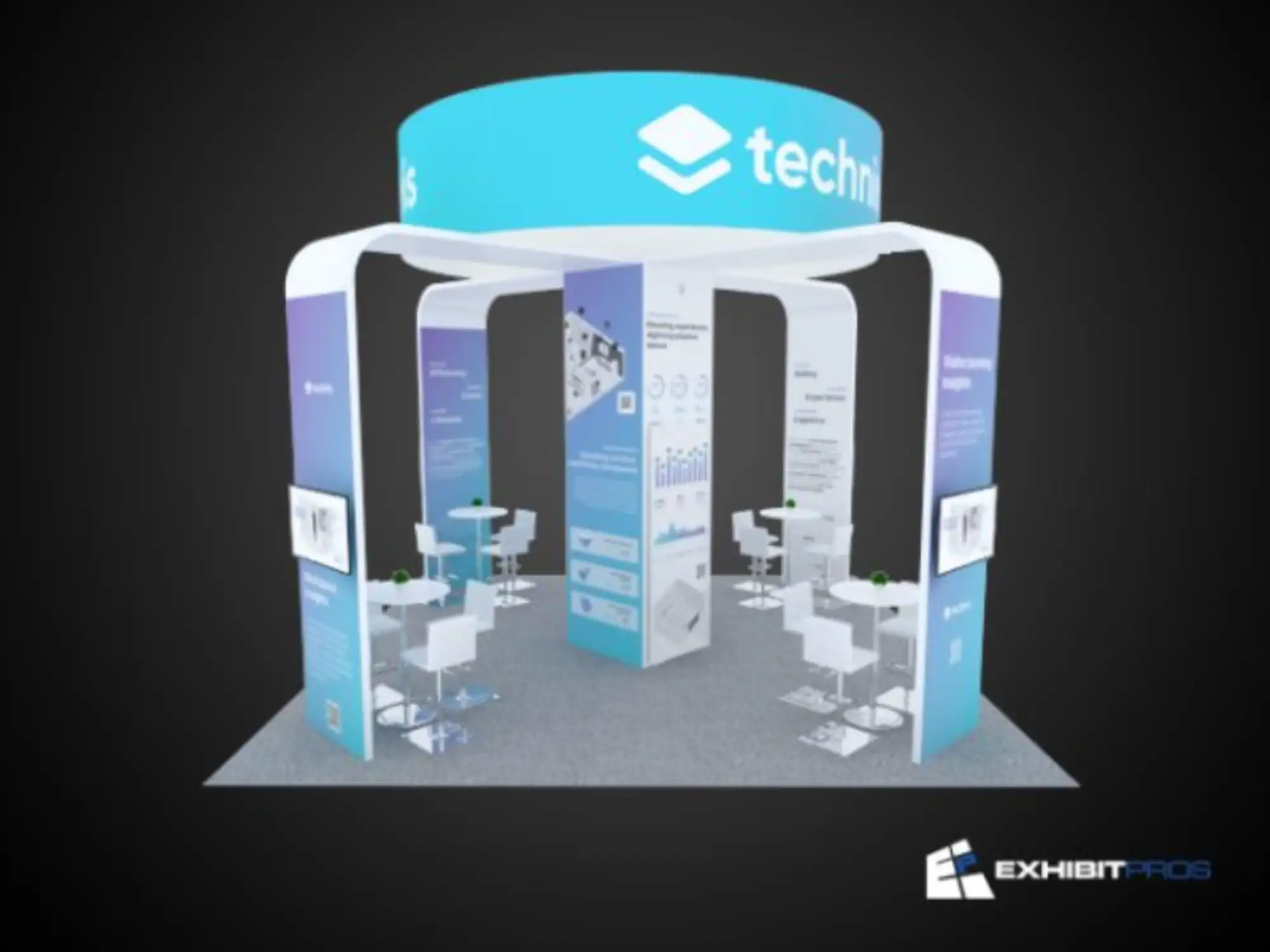A Guide To Trade Show Planning: Tips For A Successful Event
Participating in a trade show can be a game-changer for your business, offering a unique platform to showcase your products, connect with new and existing customers, and strengthen your brand presence within the industry.
However, success requires careful planning, taking into account every facet of the event. Whether you’re a first-time exhibitor or looking to improve your trade show performance, this guide provides comprehensive tips to help you navigate the complexities of tradeshow planning and execution for a successful event.
Setting Clear Objectives
Before diving into the logistics of trade show planning, it’s important to define what you want to achieve. Setting clear, measurable objectives at the outset will guide your decisions throughout the planning process and help you measure success post-event.
Figure out whether you aim to generate leads, enhance brand awareness, introduce a new product, or forge industry partnerships. These goals will shape various decisions, influencing everything from booth design to selecting the team members who will represent your brand.
Instead of general goals, define clear objectives. For example, instead of aiming broadly to increase brand awareness, set a specific target percentage. This specificity enhances your ability to strategize effectively and evaluate performance comprehensively following the event.
Budgeting Wisely
Budgeting wisely for events requires meticulous consideration of every aspect to ensure resources are maximized effectively. Monitor spending throughout so as to stay within budgetary limits and achieve desired outcomes.
One effective strategy to reduce costs is opting to rent a trade show booth rather than purchasing one. Renting offers flexibility in booth size and location, reduces upfront investment, and eliminates maintenance expenses.
This approach allows reallocating funds to other critical areas like marketing or enhancing attendee experiences. Additionally, renting can be advantageous for businesses testing new markets or uncertain about long-term commitments, providing greater financial flexibility and minimizing risk.
Choosing the Right Trade Show
Choosing the right trade show can significantly impact your return on investment, as not all events offer the same opportunities for success.
- Conduct Thorough Research: Identify trade shows relevant to your industry that consistently draw your target audience. Consider factors such as location, historical attendance rates, and the types of exhibitors and attendees present.
- Review Past Performance: Seek feedback from previous exhibitors, analyze post-event data, and gauge attendee interaction to determine if a trade show aligns with your business goals.
- Attend Before Exhibiting: Whenever feasible, attend the trade show as a visitor first. This firsthand experience offers valuable insights into event dynamics and audience demographics, aiding in your decision-making process.
Designing an Effective Booth
When designing your trade show booth, think of it as both your operational hub and a dynamic showcase of your brand’s identity. The design of your booth should draw attention and make it easy to engage actively with attendees. It should serve as a vivid reflection of your brand’s personality and values.
Achieving this involves using consistent logos, colors, and themes that synchronize smoothly with your overall marketing materials, ensuring a cohesive brand experience. Arrange your booth layout to facilitate a natural flow of visitor traffic, encouraging easy access and interaction.
Incorporate elements like demonstration areas where you can showcase your products, interactive displays that engage the senses, and comfortable seating areas where deeper conversations can take place. Each of these elements should be thoughtfully placed to draw attendees in and encourage them to stay longer.
Training Your Team
The individuals you select to staff your booth at a trade show will determine the success of your exhibit. It is essential that they are not only well-versed in your products and services but also possess a personable and engaging demeanor.
These representatives will embody your company’s image throughout the event, making it important to choose team members who are both knowledgeable and enthusiastic.
Offer comprehensive training to train these individuals. This training should cover all aspects of your offerings in detail, as well as the finer points of customer interaction and lead capture.
The team should fully understand the objectives of the trade show and know how their individual performances will contribute to these goals. This preparation helps them align their efforts with the broader company strategy during the event.
Prepare your team to handle a variety of situations they might encounter at the show to enhance their effectiveness.
Role-playing exercises are an excellent way to do this. By simulating different interaction scenarios, your staff can develop the skills and confidence needed to navigate the complexities of real-life conversations and the challenges they will likely face.
Detailed Logistics Planning
Even with a stunning booth and a well-trained team, logistical hiccups can undermine your trade show success. Detailed logistics planning is essential to ensure everything runs smoothly from start to finish.
Arrange transportation for both your staff and any materials or equipment well in advance to secure good rates. Look for accommodations close to the venue to minimize travel time and fatigue for your team.
Determine the most efficient method for shipping your booth materials to and from the trade show. Familiarize yourself with the trade show’s deadlines for receiving materials and any specific regulations they have about shipments. Have a tracking system in place to monitor your items’ journey to the venue, confirming their arrival and condition.
Pre-book services such as electrical hook-ups, internet, and catering if required. Trade shows often provide a service manual that outlines how to order these services. Reading it thoroughly will ensure you don’t miss critical deadlines or opportunities to enhance your booth’s functionality.
Scheduling and Itinerary Creation
Creating a detailed schedule and itinerary for your team during the trade show can prevent chaos and ensure that everyone knows their responsibilities and timings.
- Pre-Show Meeting: Hold a meeting with your team before the trade show begins to go over the entire schedule, discuss each team member’s responsibilities, and review any last-minute details or changes.
- Daily Briefings: Plan for quick daily briefings with your team at the trade show to discuss the agenda for the day, share updates or changes, and allow team members to provide feedback on what’s working and what’s not.
- Contingency Planning: Have contingency plans in place for unexpected situations such as staff illness, missing shipments, or equipment failures. Knowing how to quickly address these issues will reduce downtime and stress.
Marketing and Promotional Activities
Advance marketing can greatly enhance your trade show success by increasing booth traffic and raising awareness of your presence at the event.
- Pre-Show Marketing: Utilize your company’s social media platforms, email newsletters, and website to announce your participation in the trade show. Consider offering incentives such as giveaways or exclusive offers for attendees who visit your booth.
- Press Releases and Media Kits: Prepare press releases to distribute before the trade show to pique interest and attract media attention. Have media kits ready at your booth for any journalists or bloggers who stop by.
- Promotional Materials: Design and produce high-quality promotional materials to distribute at the trade show. These could include brochures, product sheets, business cards, and branded giveaways. Ensure these materials are informative, visually appealing, and consistent with your brand’s image.
Leveraging Technology
Incorporating technology can streamline various aspects of trade show participation, from lead collection to customer interaction. Use digital systems for collecting and managing leads to ensure efficient follow-up. Tools like QR codes and digital forms not only speed up the process but also reduce paper waste.
Utilize digital displays, tablets for demonstrations, or interactive screens to engage visitors and present your products or services dynamically. Consider using a trade show app if available. These apps can help you manage your schedule, navigate the trade show floor, connect with attendees, and even track competitor activities.
Final Preparations
As the trade show approaches, ensure all elements are aligned and ready for execution. Conduct a final review of all plans and materials. If possible, do a full rehearsal of the booth setup to ensure everything fits and works as intended.
Run through checklists for every aspect of the trade show – from booth supplies to staff uniforms to ensure nothing is forgotten. Finally, ensure that your team is relaxed and motivated. Their enthusiasm and energy can be as crucial as any other aspect of your preparation.
Getting Professional Help for a Successful Trade Show
By focusing on these detailed planning aspects, you can ensure a well-organized, impactful presence at any trade show, fully optimized to achieve your business objectives. This comprehensive approach to planning not only prepares you for the upcoming event but also sets a solid foundation for future trade show successes.
Exhibit Pros provides exceptional service to ensure your trade show experience is as effective and seamless as possible. We understand that every company’s needs are different, which is why we offer customized booth designs tailored to your specific requirements. Our expert team will handle everything from booth design and construction to logistics and setup.
We cater to a wide range of exhibition needs by offering various booth sizes – from compact 10×10 units perfect for smaller, more intimate presentations to larger 10×30-60 trade show booth rentals for those requiring more space to showcase extensive product lines or host larger groups.
For exhibitors looking to make a significant impact, we also provide expansive 40×40 booths that offer maximum visibility and presence.
No matter your preferences, we have the flexibility to accommodate your needs, ensuring that your trade show presence is both impressive and effective. With our support, trade shows can become a cornerstone of your marketing strategy, driving your business forward in new and innovative ways.






